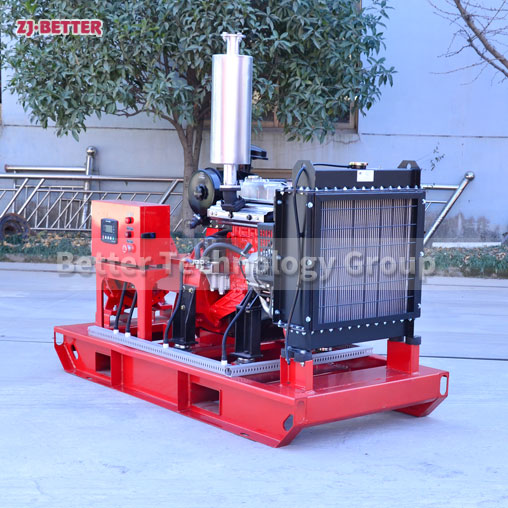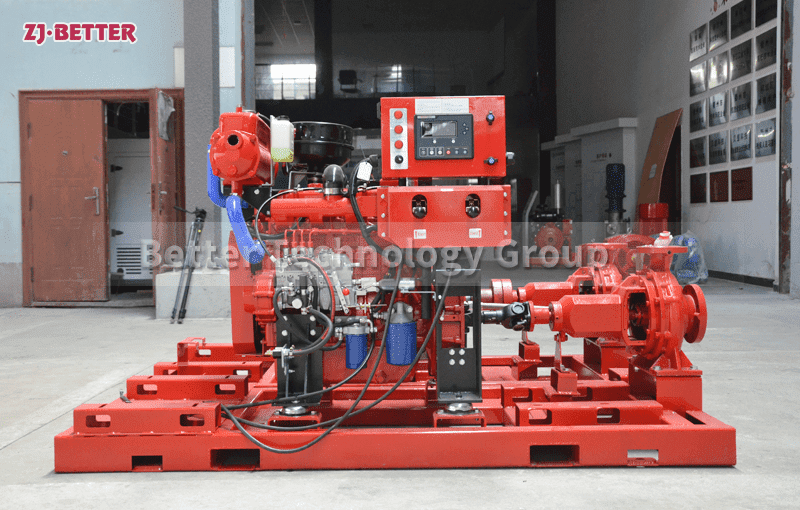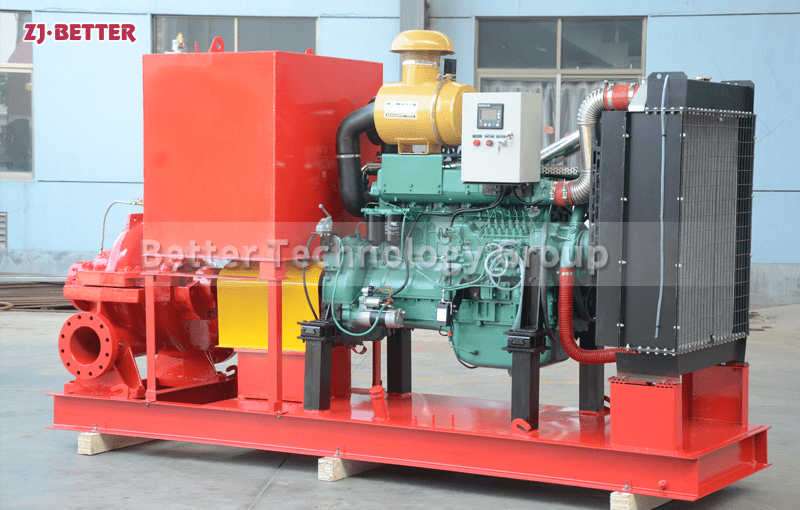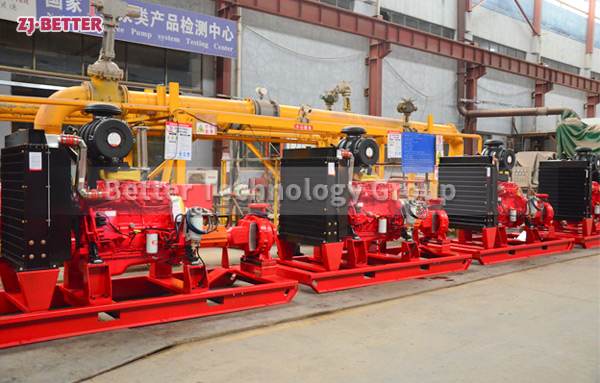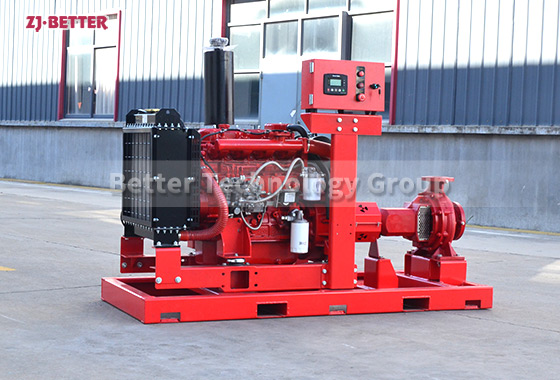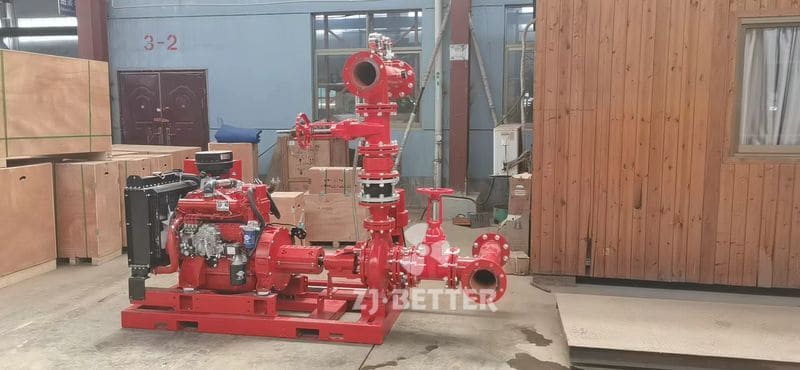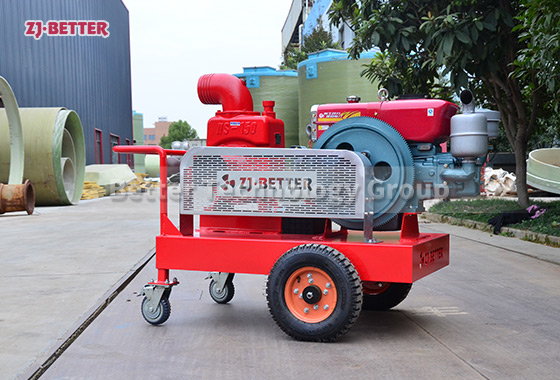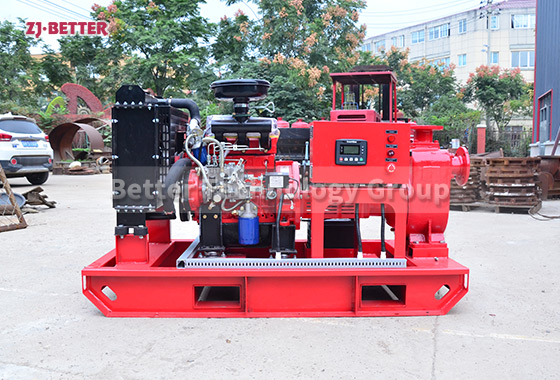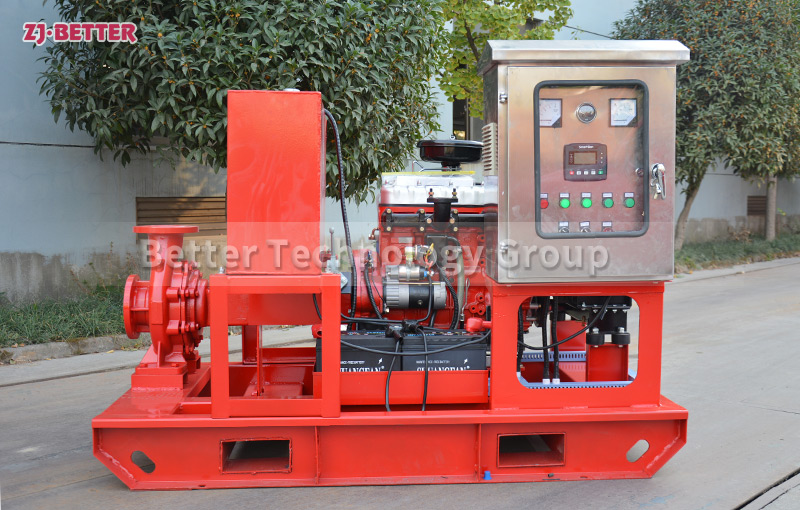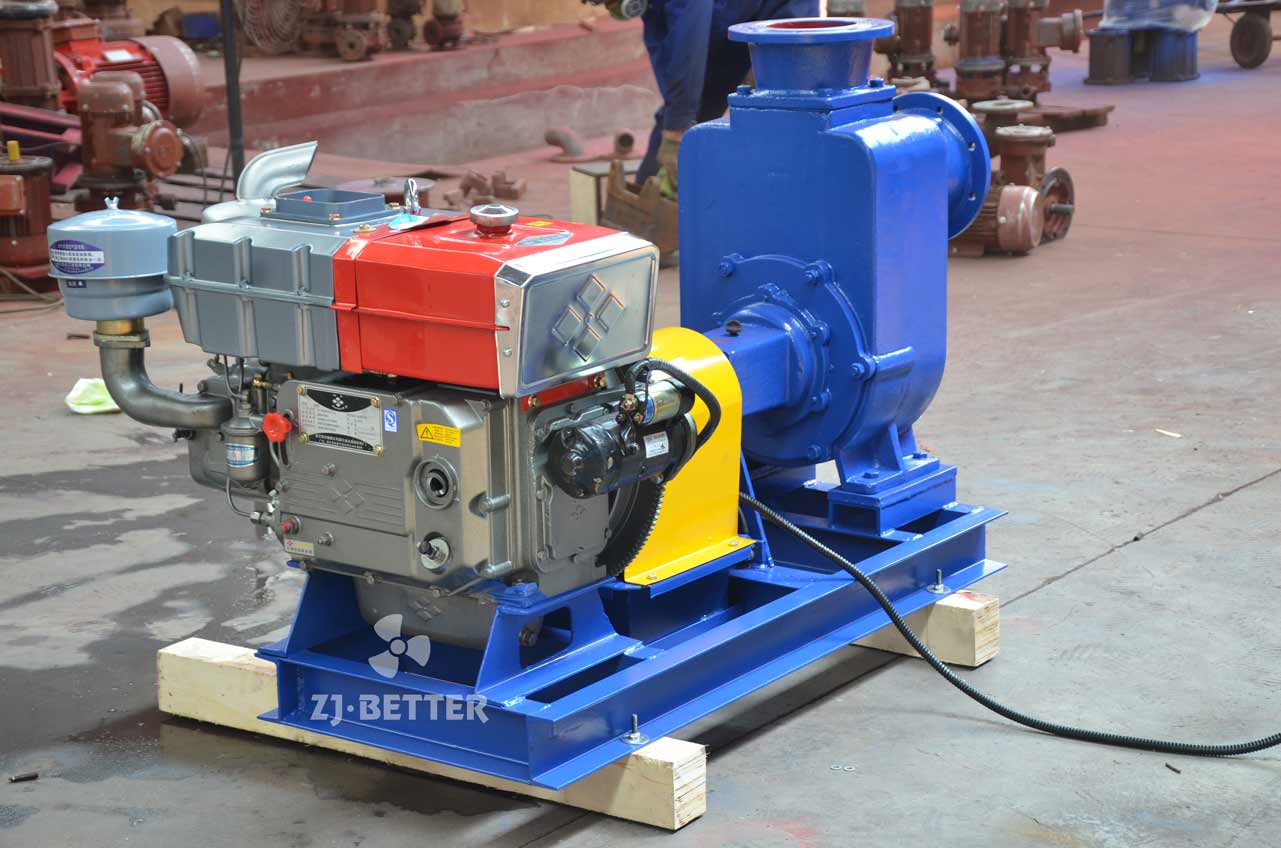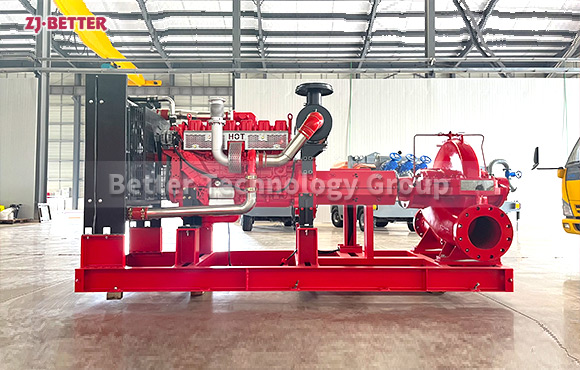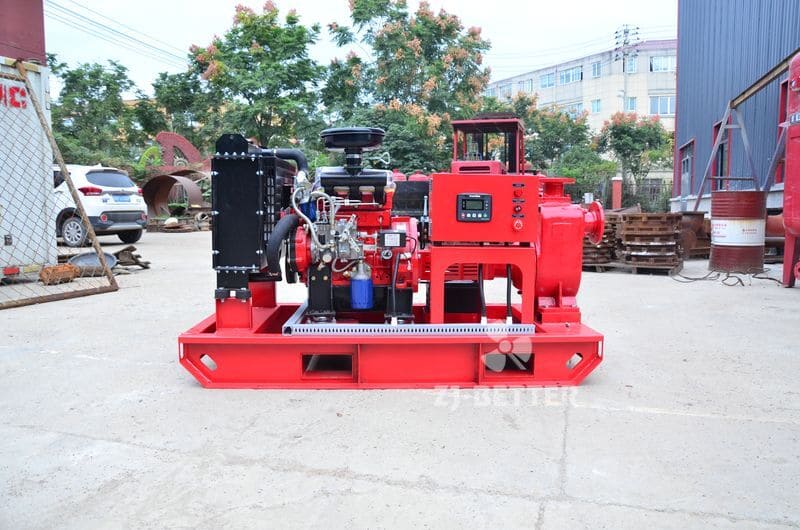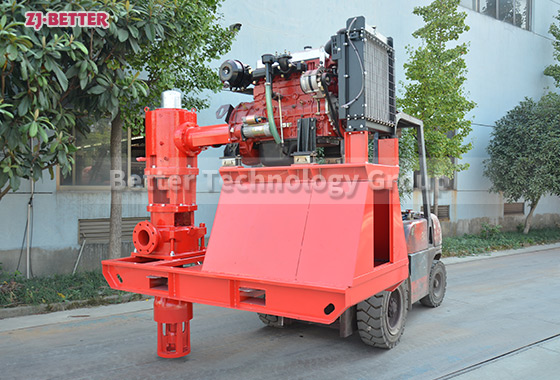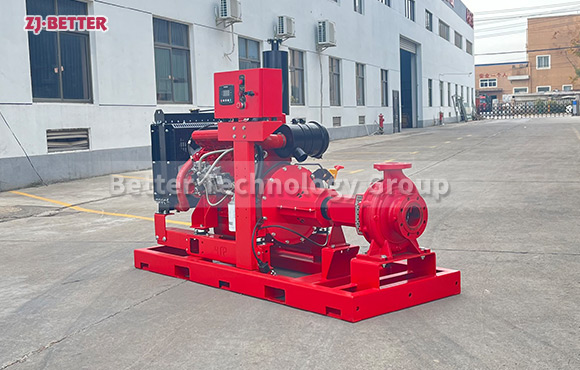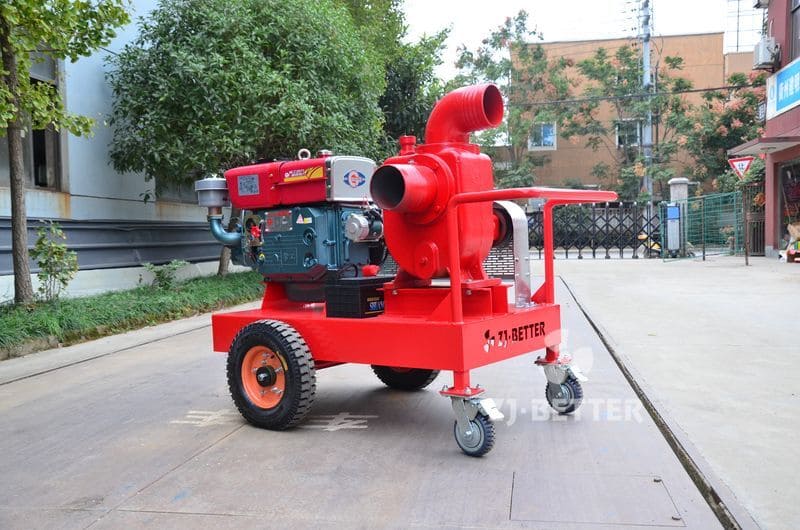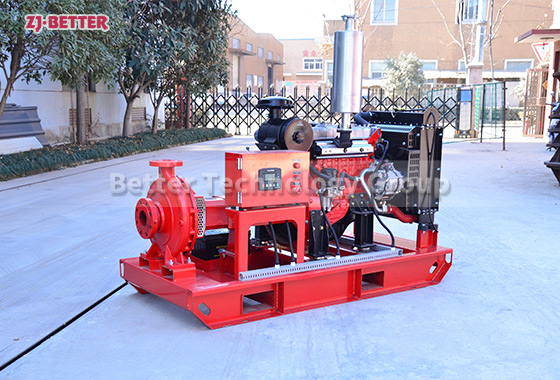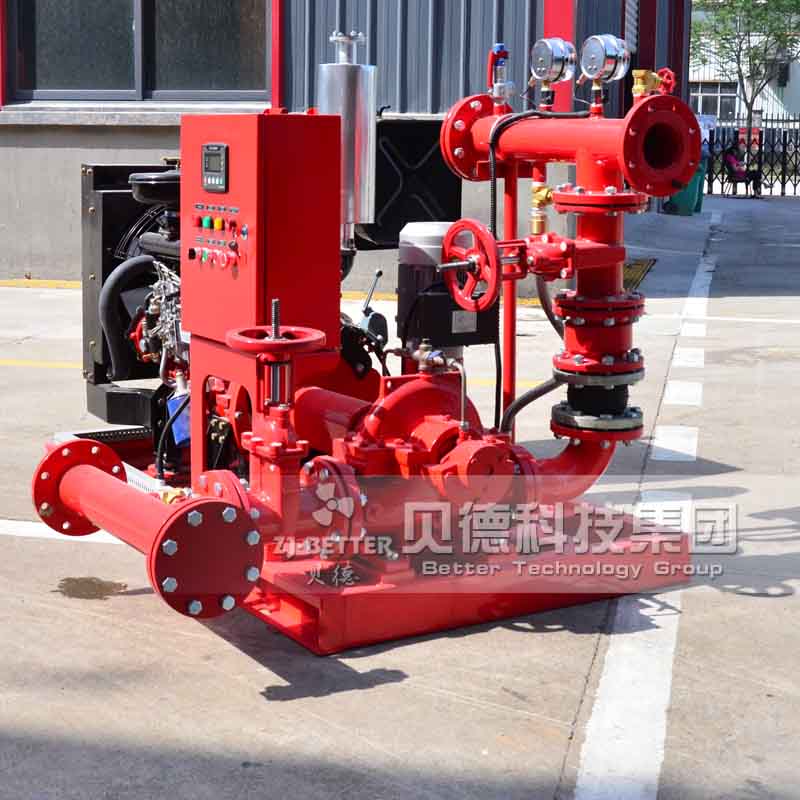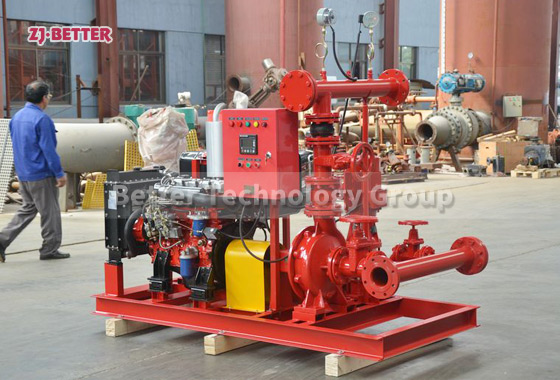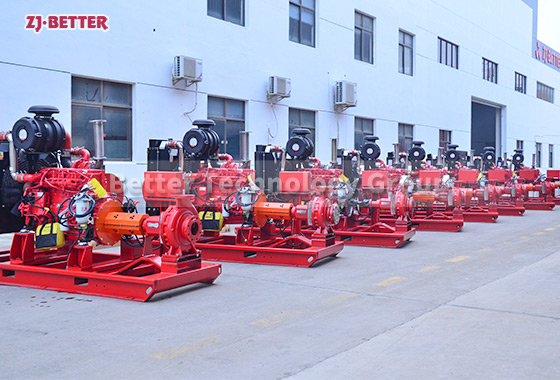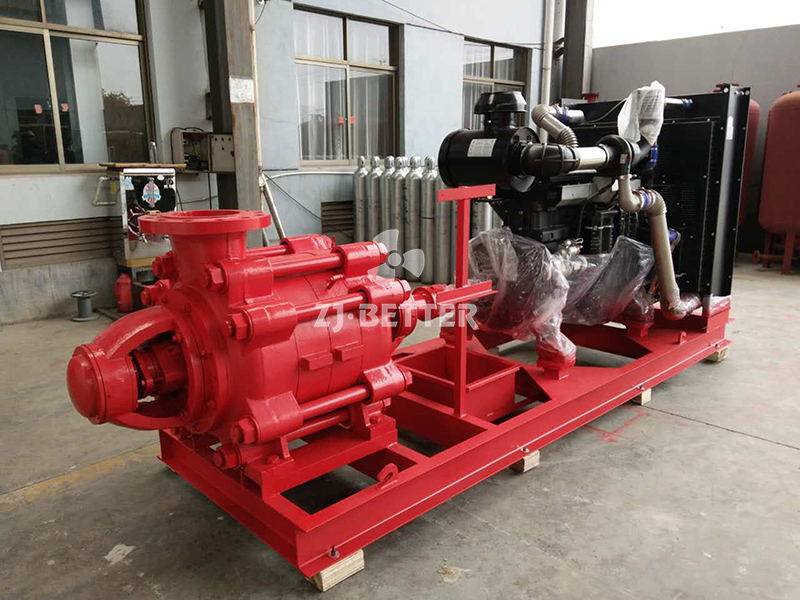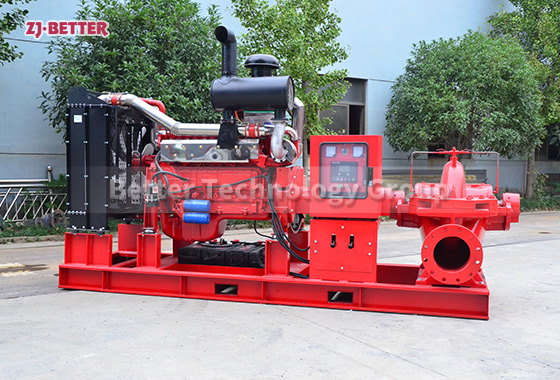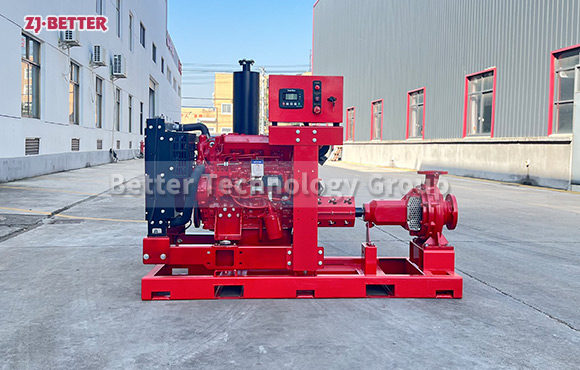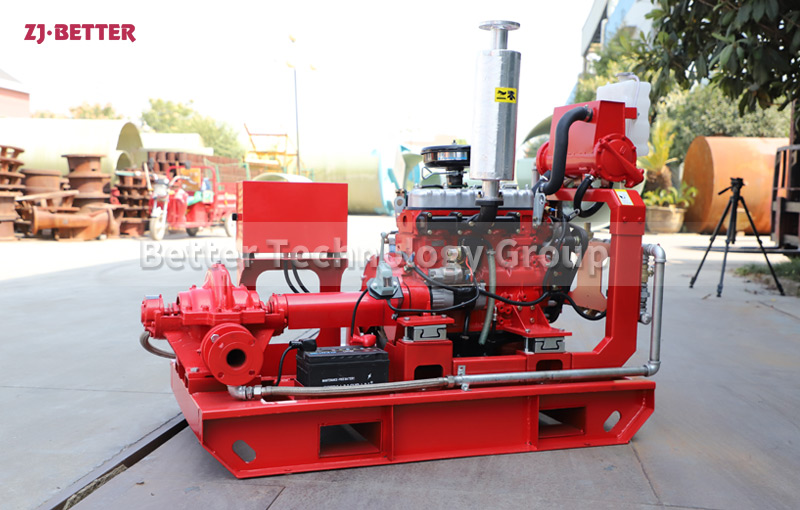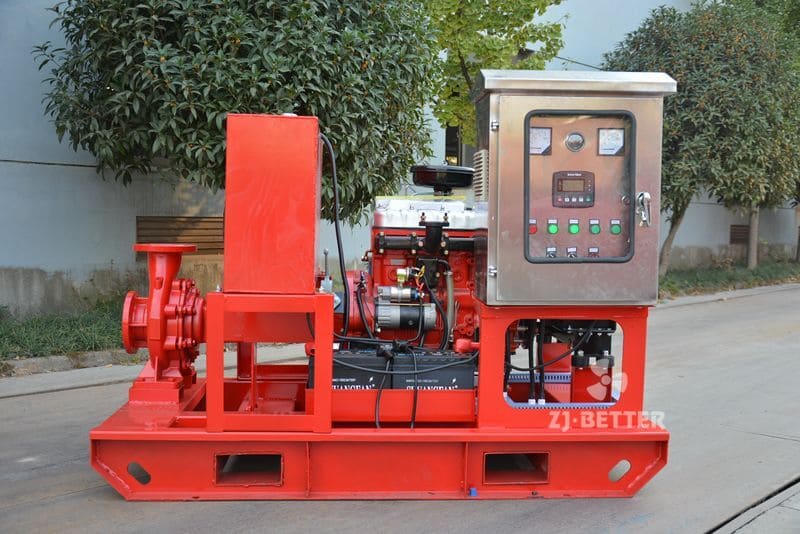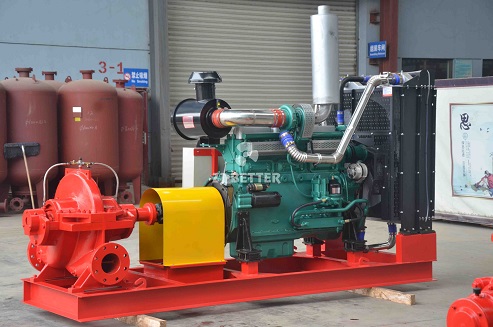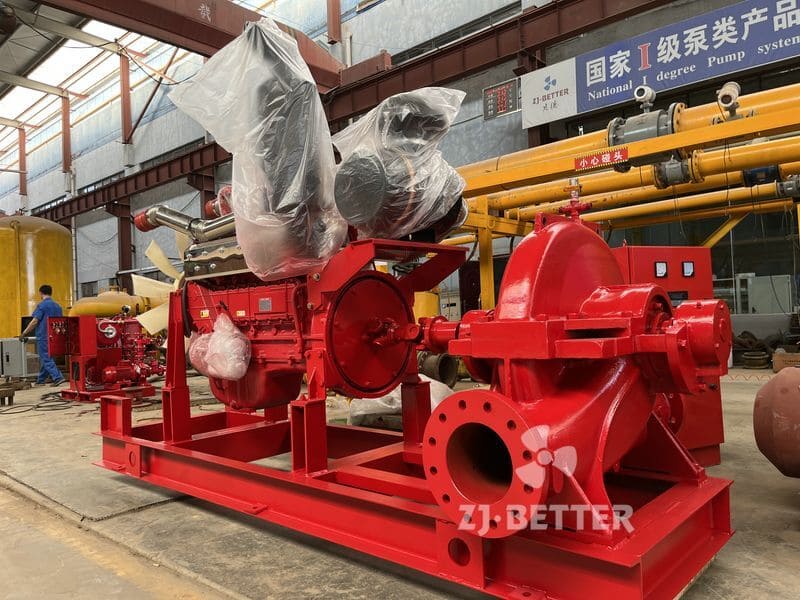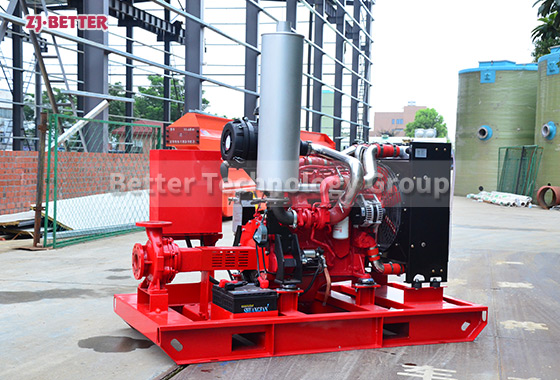Best Quality XBC-XA Diesel Fire Pump Produced By Better
Diesel engine fire pump has the advantages of light weight, small size, flexible movement, quick start, fast water discharge time, large fuel tank capacity, corrosion resistance, reliable use, convenient maintenance, etc. Heavy duty pump bearings – longer life; other components are selected from high-quality copper and stainless steel or by customer. The diesel engine fire pump has a high-efficiency open impeller design, which can handle large solids and abrasive materials while maintaining high flow rates, and high-volume air handling can be used for more “well point dewatering projects”.
The casing of the diesel engine fire pump constitutes the working chamber of the pump. The impeller, shaft and rolling bearing are the rotors of the pump. The suspension bearing part supports the rotor part of the pump, and the rolling bearing receives the radial and axial forces of the pump. In order to balance the axial force of the diesel engine fire pump, most pumps are provided with sealing rings at the front and rear of the impeller, and a balance hole is provided on the back cover of the impeller. Due to the small axial force of some pumps, there is no seal on the back of the impeller. Ring and balance hole. The axial sealing ring of the diesel engine fire pump is composed of a packing gland, a packing ring and a packing to prevent air intake or a large amount of water leakage.

